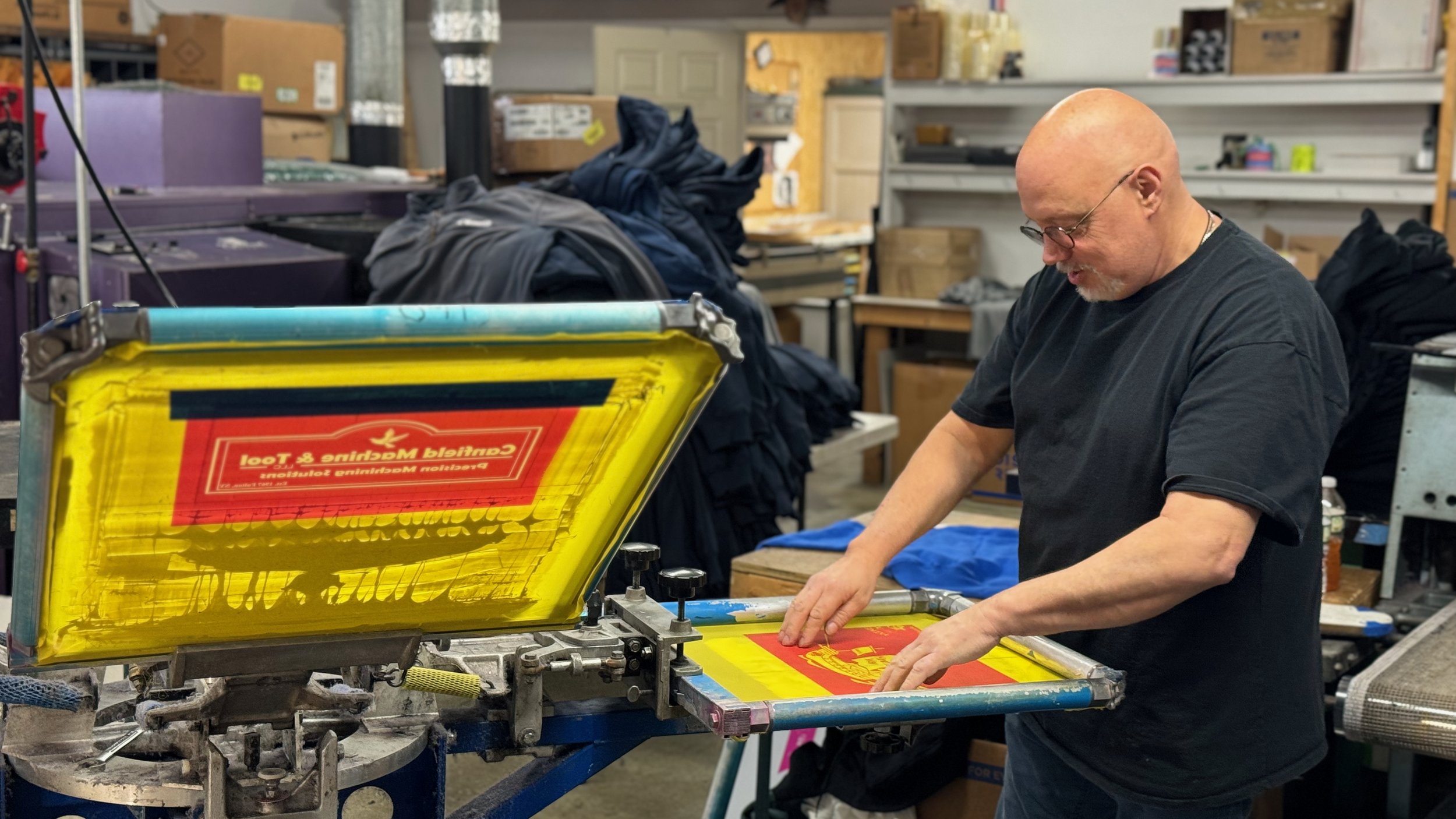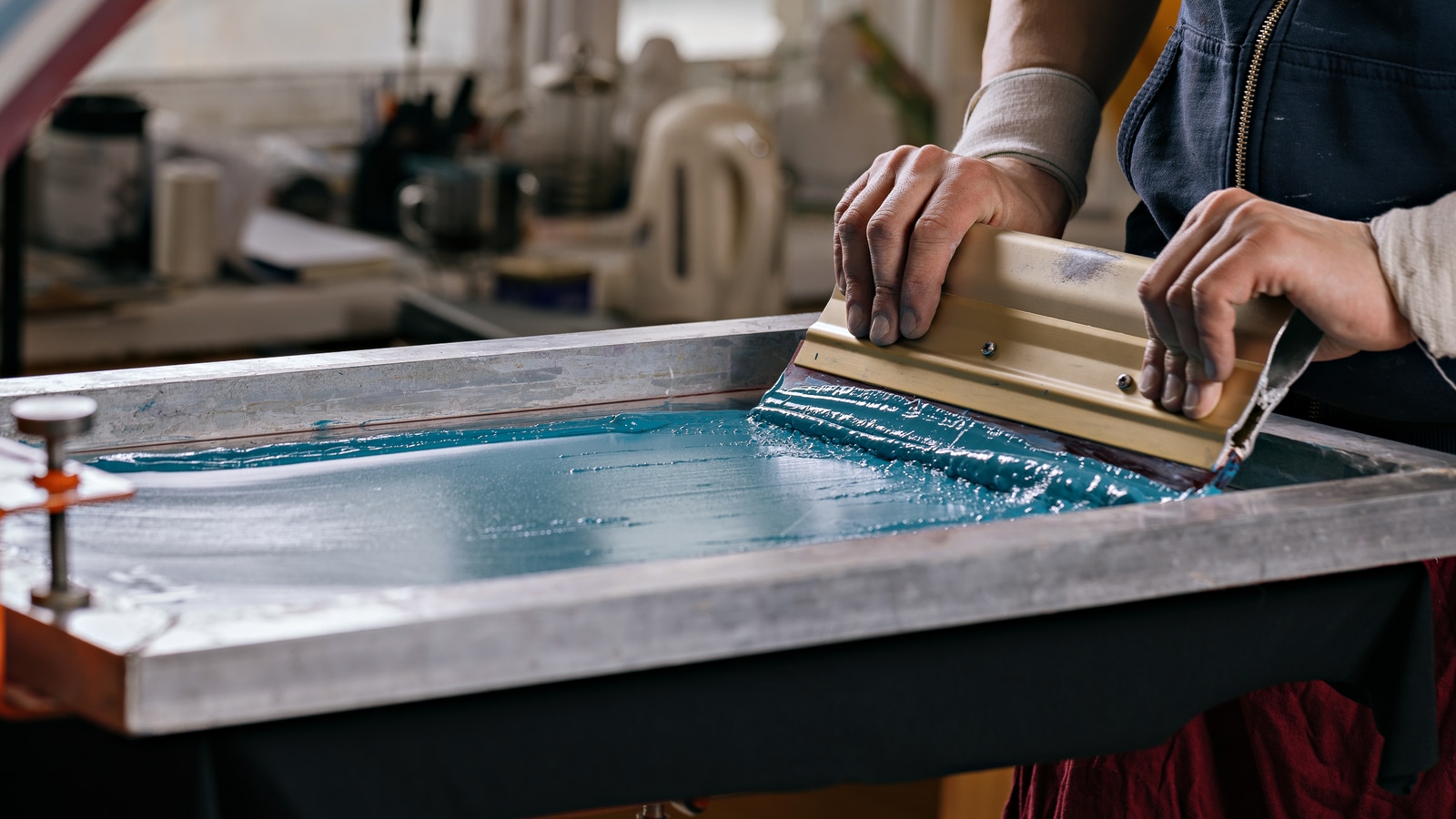Premium Screen Printing Kit for Business Startups
Wiki Article
Screen Printing Uncovered: Everything You Required to Understand About T-Shirt and Garment Printing Methods
Display printing is a fascinating technique that incorporates art with technique, supplying countless opportunities for imagination. Prepared to explore the important aspects that make screen printing an art kind?
The Essentials of Display Printing: Exactly How It Functions
When you dive right into display printing, you'll discover it's both an art and a scientific research. At its core, display printing includes producing a stencil, or display, that allows ink to travel through only in specific areas (screen printing kit). You start by choosing your layout and preparing your display with a light-sensitive solution. When you subject this emulsion to light, it sets, leaving your style as an adverse area.Following, you'll mix your inks and prepare your printing surface area. Placement the screen over the material, after that use a squeegee to press ink through the display onto the garment. This procedure needs accuracy, as you want clear, vivid prints. After printing, you'll treat the ink with warmth, ensuring it complies with the material and lasts through cleans. Each step is crucial, and grasping them will certainly raise your screen printing abilities, changing easy garments right into special, expressive pieces.
Kinds Of Display Printing Strategies
When you comprehend the basics of screen printing, it's time to discover the various methods that can elevate your styles. One popular approach is typical display printing, where ink is pressed through a stenciled display.If you're going for fine information, consider discharge printing. This method gets rid of color from the textile, leaving a soft, vintage look. An additional option is plastisol printing, understood for its sturdiness and vivid colors, making it a favored for numerous brands. Experiment with halftone printing to develop slope effects and detailed styles. Each method has its distinct charm, so do not be reluctant to attempt them out to locate what matches your style best!
Important Tools for Screen Printing
To attain sensational results in display printing, having the best devices is fundamental. You'll need a strong screen printing structure, which holds the mesh that moves your layout onto the garment. Next, spend in high-quality squeegees; these are vital for applying ink uniformly throughout the screen.Choosing the Right Inks and Products
When choosing inks and materials for screen printing, you require to think about the kind of ink that works finest for your task. Consider textile compatibility to ensure your designs look last and great lengthy. Additionally, explore environmentally friendly ink alternatives to make your printing process a lot more lasting.Sorts Of Screen Inks
Picking the right display ink is necessary for attaining vibrant, durable prints that fulfill your project's needs. There are a number of types of screen inks to take a look at. Specialized inks, such as glow-in-the-dark or metallic, can include distinct impacts to your styles.
Material Compatibility Considerations
Understanding material compatibility is vital for accomplishing high-quality display prints, especially given that different products respond uniquely to different inks. Always check your inks on sample material to assure they adhere properly and preserve shade integrity. Additionally, maintain in mind that fabric weight and structure can affect the final outcome, so picking the right ink and product combination is vital for your task's success.Eco-Friendly Ink Options
Environmentally friendly inks are coming to be a prominent option for display printers who desire to reduce their ecological influence while maintaining quality. When choosing inks, take into consideration water-based inks, which are less dangerous and easier to tidy up compared to standard solvents. These inks bond well with textiles, supplying vibrant results without poisonous chemicals. You might likewise check out eco-solvent inks that utilize less unpredictable organic substances (VOCs), making them a safer choice for both your wellness and the world.Furthermore, look for inks made from eco-friendly sources, such as soy or vegetable-based options. By choosing the ideal inks and products, you'll not only produce spectacular designs yet also add to a much more sustainable printing procedure. Make the switch, and your prints will mirror your commitment to the atmosphere!
Preparing Your Style for Screen Printing

File Format Demands
To assure your style looks dynamic and sharp on material, you'll need to pay close attention to file layout demands for screen printing. Beginning with vector files like AI or EPS, as they can be scaled without losing high quality. If you use raster pictures, select high-resolution documents, such as TIFF or PNG, preferably at 300 DPI. Avoid making use of JPEGs, as they can shed clarity when resized. Also, make certain your layout has a transparent background to avoid unwanted white edges on your prints. Maintain color settings in mind; CMYK is standard for screen printing, so transform your RGB designs appropriately - screen printing kit. By complying with these guidelines, you'll set your artwork up for a successful print.Shade Splitting Up Strategies
Color separation is a vital step in preparing your design for display printing, and understanding it can greatly boost your print top quality. You'll require to damage your layout right into individual shades, as each shade requires a separate display throughout printing. This accuracy not just ensures precise shade depiction yet additionally enhances the printing process.Resolution and Dimension
Accomplishing the very best cause display printing begins with guaranteeing your style has the best resolution and size. Ideally, your art work must be at the very least 300 DPI (dots per inch) for sharp, clear prints. Your final product may look pixelated and unprofessional. if you make use of lower resolution.When it concerns dimension, think about the dimensions of your print area. Design your art work to match the last print size, preferably producing it in the real measurements you'll be printing. This means, you'll stay clear of any type of unforeseen scaling concerns.
Always check your layout in both vector and raster styles. Vector graphics can be scaled without shedding top quality, making them suitable for screen printing. Preparing appropriately will ensure your design looks incredible on every garment!
Step-by-Step Display Printing Process
Display printing is a vibrant process that allows you to produce vivid styles on various surface areas. To get started, you'll need a display, emulsion, and your chosen ink.After cleaning out the unexposed emulsion, your display is prepared. Establish it up on your printing surface and align your garment underneath it. Put ink onto the screen and use a squeegee to press the ink via the stencil onto the textile. Raise the screen thoroughly and let the print dry. Treat the ink using heat to assure durability. That's it! You've efficiently screen published your layout.
Tips for Successful Display Printing Projects
While you're diving right into your screen printing projects, bear in mind that prep work is crucial to success. Start by collecting all your products-- inks, screens, garments, and mops. A clean office helps stop undesirable mistakes, so clean up before you begin.Next, validate your artwork is high-resolution and appropriately sized for your garment. Evaluate your screen for proper direct exposure and clean it thoroughly to avoid smudges. When mixing your inks, adhere to the maker's guidelines to attain the best uniformity.
During printing, apply even pressure with your squeegee for consistent outcomes. Do not rush; take your time to validate each print meets your standards. After printing, let your garments dry entirely prior to handling or packaging them.
Lastly, always keep a sample of your job for future recommendation. In this manner, you can assess your progress and enhance your techniques with time. Satisfied printing!

Regularly Asked Questions
How Lengthy Does It Require To Set up a Screen Printing Task?
Establishing a screen printing work normally takes around half an hour to an hour. You'll prepare the screens, mix inks, and change the press. The time differs based upon complexity and experience, so remain organized!Can I Print on Different Textile Keys In Using the Very Same Method?
Yes, you can publish on different textile kinds making use of the same method, but you'll need to adjust your setups and inks. Some textiles soak up ink in a different way, so trying out warranties the very best outcomes for each product.What Are Usual Errors to Stay Clear Of in Screen Printing?
When screen printing, stay clear of usual mistakes like making use of the wrong ink, neglecting correct exposure times, or avoiding pre-press checks. Constantly examine your arrangement and keep clean screens to ensure quality outcomes each time.Exactly How Can I Appropriately Clean and Keep My Screen Printing Tools?
To properly tidy and preserve your screen printing devices, you ought to routinely wash screens with appropriate solvents, check mops for wear, and ensure all devices are saved dry and dust-free. Consistency prevents pricey repairs and enhances performance.Is Display Printing Eco-friendly Compared to Other Techniques?
Display printing can be a lot more eco friendly than other techniques, particularly if you use water-based inks and eco-conscious materials. By picking lasting supplies and techniques, you decrease waste and decrease your effect on the world.Display Printing Uncovered: Everything You Required to Know About Tee Shirt and Garment Printing Methods
At its core, display printing entails developing a stencil, or screen, that enables ink to pass through only in particular locations. Setting the display over the fabric, then use a squeegee to push ink through the display onto the garment. One popular approach is standard display printing, where ink is pushed with a stenciled display.When picking inks and products for display printing, you require to take into account the type of ink that works ideal for your project.
Report this wiki page